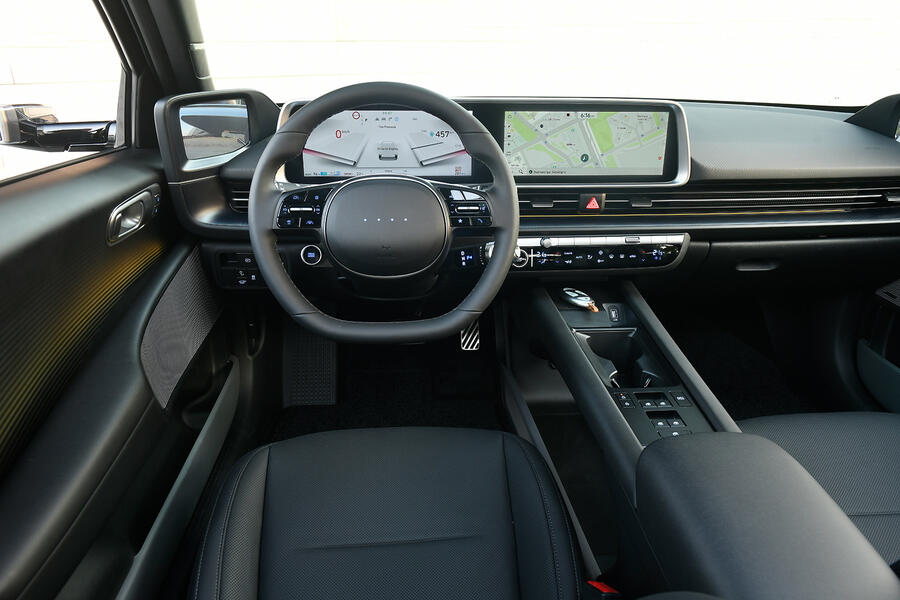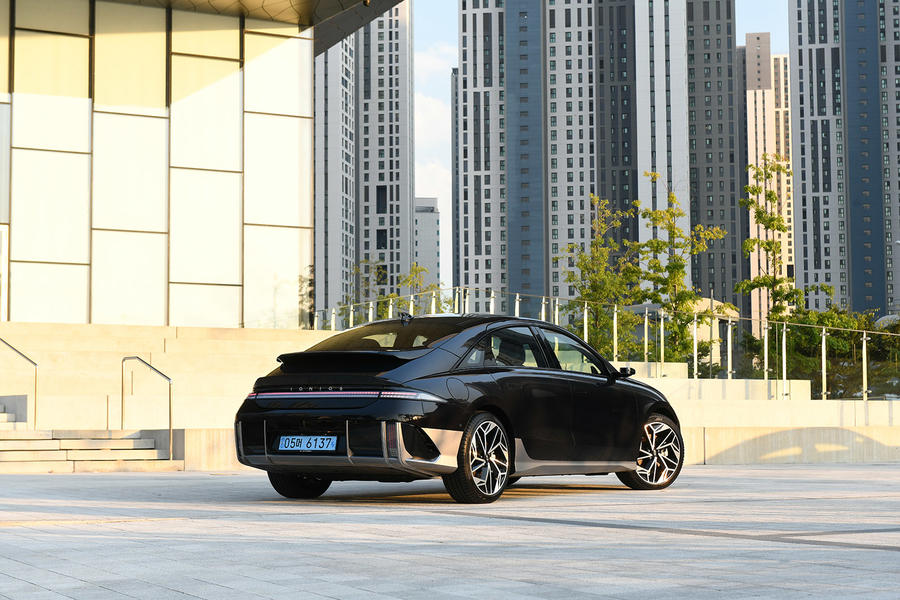The first time you set eyes on the new Hyundai Ioniq 6, all stretched, swooping lines and Porsche 911-esque rear, you find yourself asking: what were its designers thinking?
If 2022-spec Hyundai were a more conservative, boring manufacturer, the Ioniq 6 wouldn’t look anything like it does: it would be a reskinned saloon version of the ultra-successful Ioniq 5 SUV. Heck, they could have just fiddled with the roofline of that car and churned out a Hyundai Ioniq 5 Coupé.
Then again, if Hyundai were a more conservative, boring manufacturer, the Ioniq 5 itself wouldn’t look anything like it does. By ignoring its rulebook and convention for that car, the Korean company produced a cutting-edge EV that fundamentally shifted its brand’s market position upwards. So it probably shouldn’t surprise that Hyundai has elected against a safe follow-up that gently reworks that model’s angular, Lancia Deltalike styling, instead throwing out everything bar the ‘parametric pixel’ LED light graphics.
So what were its designers thinking? The answer is 0.1x. That was the slogan that Hyundai styling chief Simon Loasby had printed on T-shirts for the team that developed the exterior design for the Ioniq 6. It refers to the drag coefficient target the team set to meet the car’s brief to be the most aerodynamically efficient four-seat, four-door electric saloon possible – a true “electrified streamliner”.
They failed. The Ioniq 6 has a Cd of 0.21, above the team’s hugely ambitious target. But Loasby says that “if 0.21 is failure, I don’t mind failing.” It’s still comfortably the slipperiest Hyundai ever designed, and that’s reflected in the reason for that drive for aero efficiency: range. The Ioniq 6 has an official energy efficiency of 4.3mpkWh, which gives it a maximum official range of up to 382 miles. That’s a substantial 67 more than the equivalent Ioniq 5 (which has a Cd of 0.29), despite using the same E-GMP platform, powertrain and 77.4kWh battery. And while UK trim levels and prices haven’t yet been set, the suggestion is that it will be on a par with the equivalent Ioniq 5, which starts at £45,150.
More importantly, that range puts the car ahead of the leggiest versions of what Hyundai cites as the Ioniq 6’s two main electric saloon targets: the Polestar 2 (341 miles) and Tesla Model 3 (374 miles). Forget the 1930s-slipstreamer references: that’s the comparison that will be key to shifting lots and lots of Ioniq 6s.
































Add your comment